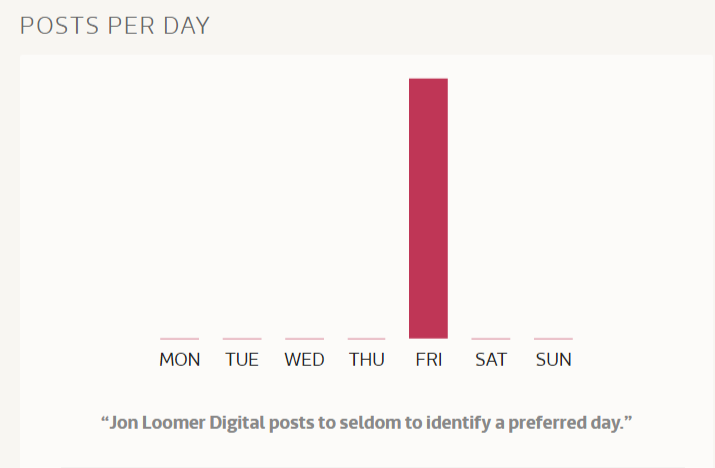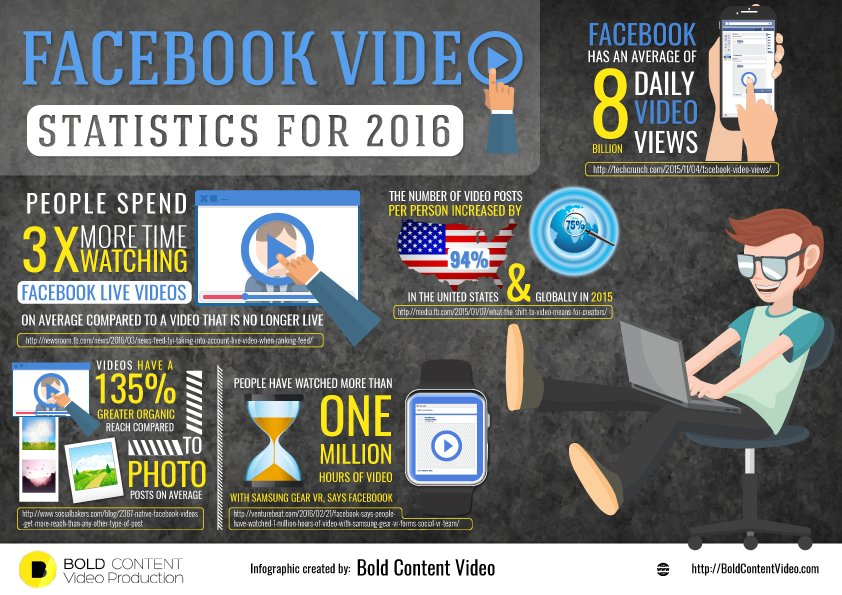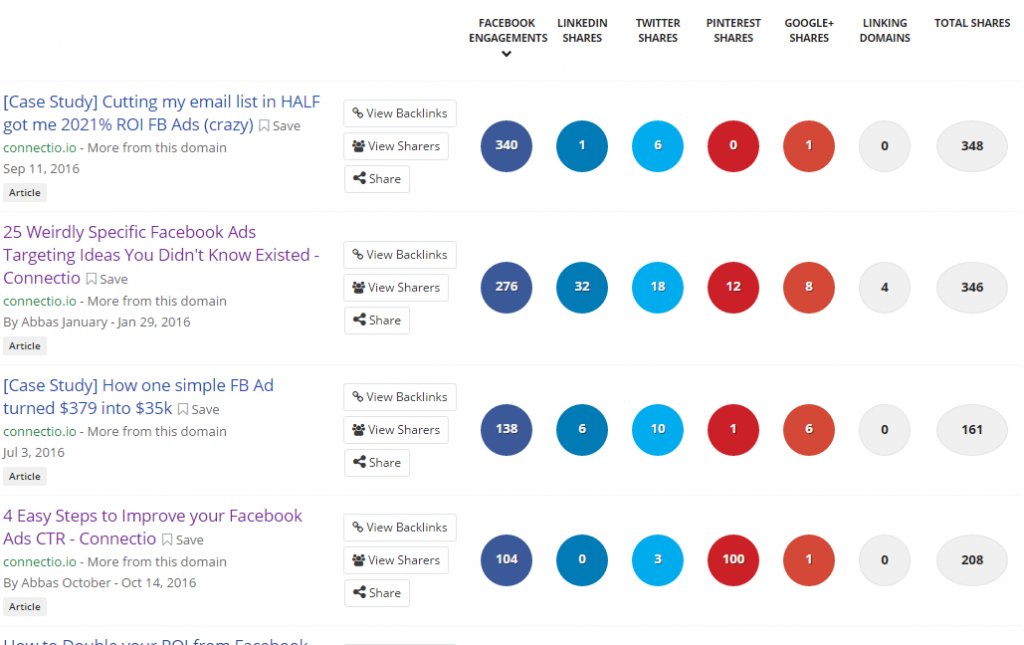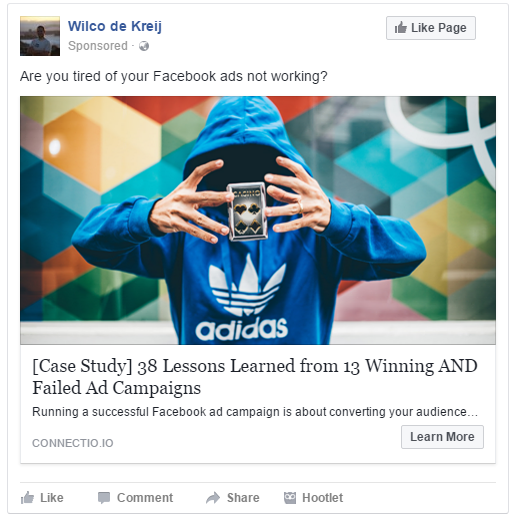Facebook is on it’s way to becoming the largest referral platform for website traffic. Last 2015, the social media powerhouse successfully overtook Google and owned 40% of website traffic in the World Wide Web.

Businesses all over the world hope to turn a slice of Facebook’s 1 billion+ users and gigantic engagement into inbound website traffic. If website traffic will help your business in any way, Facebook should be your #1 priority.
To get website traffic, you have to be visible and relevant to Facebook users as much as possible.

However, getting in Facebook users’ News Feeds isn’t so easy anymore.
Here are some facts showing it:
- About 60 million businesses have Facebook Pages
- 1500 stories may appear on one user’s News Feed after log-in.
- 87% of these stories go unanswered.
- Businesses reach only 2% organic traffic from the post.
- Since 2015, businesses witnessed up to 42% decline in their organic reach.
With the rapidly increasing competition, ads will only get more expensive. In turn, making a good ROI off ads will just get more difficult. The most obvious solution to get around this problem is to have better organic reach.
So, as an owner of a Facebook Page, what can you do to make sure that your page posts garner the best organic reach as possible?
Here are 20 ways to increase your Facebook posts’ organic reach.
1. Promote stuff other than your products and services.

Have this first rule printed out and post it on on your wall.
Facebook algorithms just got more intelligent. They can now distinguish promotional posts from non-promotional posts.
Facebook is casual social platform and Mark Zuckerberg wants to keep it like that. People spend time on Facebook to find out what their friends and family are up to, not to be sold to.
If you want to get real organic traffic from your Facebook posts, it’s best to publish informative content and blog posts as frequently as possible rather than boilerplate sales posts.
2. Publish evergreen content.

Creating hot content is different from creating evergreen content.
Both need to be of super-high quality, but evergreen content has the timelessness that hot content doesn’t have.
You can share it over and over again (like once every few months) indefinitely and it will still give people value.
It makes sense to publish evergreen content that’s read and loved by all people. Such content will gain organic traffic, regardless of when you post it, so make the best use of it.
3. Use post targeting.
Do you know that you can target people who should see your Facebook posts?
This can make a big difference in your marketing efforts yet very few businesses take advantage of it.
Facebook Audience Optimization is an organic targeting tool that helps businesses reach and engage the right audience on Facebook, as well as better understand the interests of people clicking on their posts.
You can use interest tags to describe the interests of people who are most likely interested in your post. For example, a fashion-related post might include tags for popular fashion brands.

Similarly, you can further narrow in on your audience by Age, Gender, and Demographics.
Use the native Facebook Post Targeting to reach a narrower set of people from your following.

For example, if you are a retail store and your post is for female buyers, it makes sense to show it only to your Female fans.
4. Post at the right time/when your competitors are asleep.
Amidst hundreds of Facebook posts that compete for News Feed visibility, you need to find the perfect time to post your content.
Various studies show what the best time to post is but they significantly vary in each industry and demographic.
Dig into your Facebook Insights to see which times and days your audience is most engaged and capitalize on them.

Furthermore, you can use tools such as Fan Page Karma to extract the ‘prime’ time slots of your competitors.
You can know what day they usually prefer…

… and which time of the day works best for them.

5. Post more links.
Links posts are more likely to get better interaction and engagement than just text or image post.
Image-only posts used to be more popular on Facebook before. Now, links posts are getting more traction, especially if your KPI is CTR where link post triumphs over all form of post types.

6. Publish native Facebook videos.
Videos provide solid engagement. Though difficult to produce, they are considered the best form of content marketing material a business can offer.
The results and statistics from different businesses complement this fact very well. Facebook video posts have more than 135% organic reach than any other post type.

That sure is enough reason to consider using native Facebook video posts to increase organic reach.
7. Test your posting frequency.
Besides posting at the right time, you should also consider the quantity of Facebook posts.
A study conducted by HubSpot revealed that Facebook Pages with over 10,000 followers enjoyed more reach and link clicks when they started posting more.
However, the number drops for Pages with less than 10,000 followers when they ramp up their posting frequency. The page that post 60 times per month received lesser clicks than the page that posted 1 to 5 times per month.

So before increasing or decreasing your posting frequency, analyze what type of business you have and your number of followers.
8. Partner with other Facebook pages in your niche and cross-promote content.
This is more of a strategic move. Find and partner up with other pages in a non-competing but relevant niche.
Once you find partners, cross-promote each other’s content. If your content is good enough to be viewed and liked by their target audience, they are more likely to open doors of their audience for you.
But you also need to ensure that their content is good enough to fill in your audience. If your audience won’t find it useful, the partnership can backfire against your favor.
9. Invite your email list on the Facebook Page post rather than just sending them directly to the website.
This might sound crazy to you but is a super-effective approach.
Why?
Although your primary objective is to direct your visitors to your content or website, sending your existing subscribers to your Facebook post open up new opportunities for wider audience.
How?
If your content is valuable enough, your audience from email subscribers are more likely to like, comment and share it. And when they do, your posts reaches in the timelines and feeds of their connections too.
10. Share posts from your Facebook Page on your Facebook profile.
Similar to the strategy just above, you can start the marketing process right from your Facebook profile.
Share your post on your personal timeline too.

We agree that this action can be too business-y for your friends or relatives but it can be effective if you have friends with similar interests.
11. Request that your engaged audience turns on notification for your new posts.
Have you ever considered directly communicating with your audience, especially the ones that are most engaged with your content?
You can politely ask your followers to turn on notifications for your Page so they will see all your latest posts on your timeline.

If executed well, this can work well in your favor. If you already are actively engaged with your audience, your loyal audience and followers will likely accept your request.
And if they accept it, you’ll be able to penetrate their friends and followers for more organic traffic juice too.
12. Use Facebook Insights.
When tracking the performance of your Facebook post, you won’t get better data than what Facebook Insights provides. It can help you understand all angles of your Facebook posts and how effective they are.

But don’t just read the data in your Facebook Insights. Understand each metric and interpret how it relates to the performance and how you use that data to execute decisions.
So, for instance, if image posts are giving you better organic reach, focus on adding more value to them and you will see your reach extend further.
13. Use competitor insights to analyze what they are doing.
Another good way to increase your reach is to analyze what your competitors are doing, what’s working for them, and how can you replicate this for yourself.
BuzzSumo helps you see what’s working for them and what isn’t.
Using BuzzSumo, you can see their popular posts, the type of posts, and how much they are shared across Facebook, as well as other platforms.

Similarly, Fan Page Karma tools can also provide you with insight on what’s happening with your competitor’s page.

14. Find the right content mix for your audience.
Getting the required traction and reach from your content largely depends on the type of content you are producing and sharing.
If it doesn’t jell with your audience, it won’t get many clicks and will ultimately get a flat reach.
To ensure your content successfully reaches people far beyond News Feeds, it needs to deliver value.
Don’t just stick to a single content type. Rotate and try out different types of content to promote on Facebook. Try sharing articles, infographics, videos, as well as including Facebook Live Video weekly or fortnightly in your content mix.

Keep track of which content gets popular at which day or time. Once you have identified the right mix of content and when to share, stick to it and see your reach increase in time.
15. Use the right image and headline.
Finding the right image and headline for your post is important in getting the traction you want.
To find out which is the best image and headline for a post, run a simple A/B test using Facebook Ads just like we did for this example.
The objective of the ad campaign we created was to find out which ad image and the headline will get the most organic traction i.e. clicks, comments, and shares.
If an image and headline are popular (if promoted via Facebook Ads), then it is highly likely that it will be popular too when shared via Facebook Page post.
The test was divided into two phases:
Phase 1: Finding the best image.
The Phase 1 of this A/B test was done for the ad images only. The objective of the first phase was to find the best image for the ad.
For the blog post, we created a set of 3 different ad images that we would use on the ad campaign. Each image had a separate ad to go along with it and this was the only change made in all 3 ads. The ad headline was kept same in all the 3 ads variations.
This was the first image we used.

The first ad image performed well and achieved more than 11% CTR.

Below was the second image used. As you can see, the headline is consistent but the ad image is changed.

We got nothing fancy from this one. Though this the original image we thought of using the blog post and the image, it clearly turned out to be a huge disappointment.

The image below was the final image of the rotation in the first phase.

The results on this were good too. We had more than 8% CTR but all in all, it didn’t perform well than the first image we used.

After the first phase of the test, we were able to identify the image that was giving us the best CTR.
This image was shortlisted for the Phase 2.
Phase 2 – Finding the best Headline.
The objective of Phase 2 was to test different headlines of the Facebook Ad with the winning image from the first phase.
Similar to Phase 1, we created 4 (1 original and 3 variations) different headlines that will be tested against the winner image.
To start off, we used the winning image with the original blog post title.

Here are the stats of the original headline with the winning image.

Not bad. We had a CTR rate of 8.65%
Next is the 1st variation of the original headline we used.

The CTR rate improved slightly from the original headline.

Then, we tested the 2nd variation of the headline.

With 4 times lesser CTR than the first two variations, it didn’t turn out to be that good.

Below is the final variation of headline we used.

And here are the stats on this last revised version of headline with the winning image.

The last headline performed well but not enough to beat the results we had from the first variation of the headline.
Using the data above, we can say that the winning image worked best with the 1st revised version of the headline, followed by the original headline.
So, if we start promoting this image-headline combination on the Facebook post, it will have a high probability of getting clicked, liked, and shared by targeted audience, which automatically opens up doors for more organic Facebook traffic and better organic reach.
Read More: How to Write Facebook Ad Headlines That Drive More Clicks
16. Show people you are listening and paying attention by responding quickly.
Your Facebook followers want to see and interact with you. They don’t want your Page to be like a deserted signboard. It has to communicate with the audience.
If you are engaged and responsive on your Facebook Page, your followers will take more interest in you. They want to interact with people that are approachable and listen to what they have to say.

So if a person leaves a comment on the content or post that you shared, make sure you reply back as soon as you can. Even if you can’t reply back, just like it to acknowledge that you have at least taken put the time to read their comment.
17. Recycle or repurpose your evergreen content
Businesses often find difficulty in creating new and quality content on a consistent basis. But what if you don’t need to create new content from scratch to produce quality content consistently?
This is where content repurposing comes into effect. Handpick your best evergreen posts and convert them into a different post and different angle.
For example, if your video earlier was too lengthy, you can alternatively reach your audience again using quick infographic repurposed from that video.
Each time you share that content on your Facebook page, it picks up traffic for you.
18 – Plan your content in advance/create a buzz for your content such as for podcast.
Sometimes it’s not your post but the effort you put in it.
If you want to make something popular, you should do it properly. Invest some time and effort on your post before publishing it.
If you plan ahead for your posts, you can be more strategic about each piece of post or content you share.

Since you will be doing multiple types of content, it makes sense to plan in advance. So, your strategy should be different for video, infographic, and a simple article.
19 – Use a clear CTA.
You should have a clear understanding of that you are trying to achieve with each post.
Your goal may not always be clicks to your website. It can also be that you do like them to comment on your post or maybe you want them to share it.
Your CTA must speak what you really want your audience to do with your post. This CTA should be added right inside the description/headline/content of your post.
These might seem very simple tasks but small things build up to create big results.
20 – Use hashtags but not more than 2.
Hashtags provide a very simple and effective way to find and participate in related conversations and posts around Facebook.
Use some time researching and finding the hashtags that are popular in your niche and include them within your post.
You can use hashtag research tools such as Hashtagify to identify the top hashtags in your selected niche.

But keep your use of hashtag nominal. You don’t want to overdo it as it can affect the performance of your post too.
Calvin Klein did a hashtag campaign, #MyCalvins, which called upon users to post images of themselves wearing underwear bearing the company’s iconic logo.

Though the campaign was largely was targeted towards Instagram users, it resulted in a whopping 2.2 million increase in Facebook fan growth and 469 million global reach (all social platforms combined).
Conclusion
Facebook is social media’s 800-pound gorilla to be reckoned with and it’s wise to work with its way of things if you want to take your online business to the next level. However, the competition for Facebook relevance and visibility is getting tighter and more costly.
That’s why organic reach is such a valuable factor in getting traffic from Facebook. It can get you maximum results for whatever cost you’re willing to pay and increase your influence and credibility within the platform.
So there you have it, 20 different ways to increase the organic reach of your Facebook post. Even if you go on implementing half of them, we are sure you can double your organic reach of your Facebook posts.
Do you have ideas for increasing organic reach? Share them with us!

